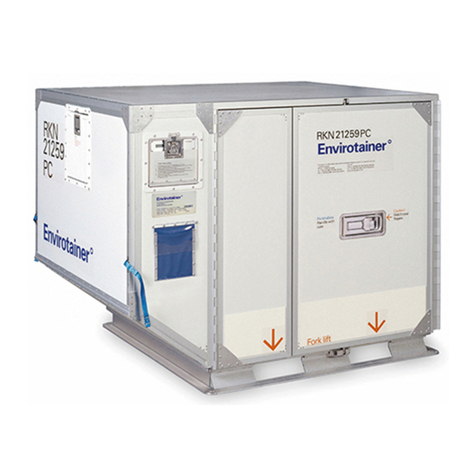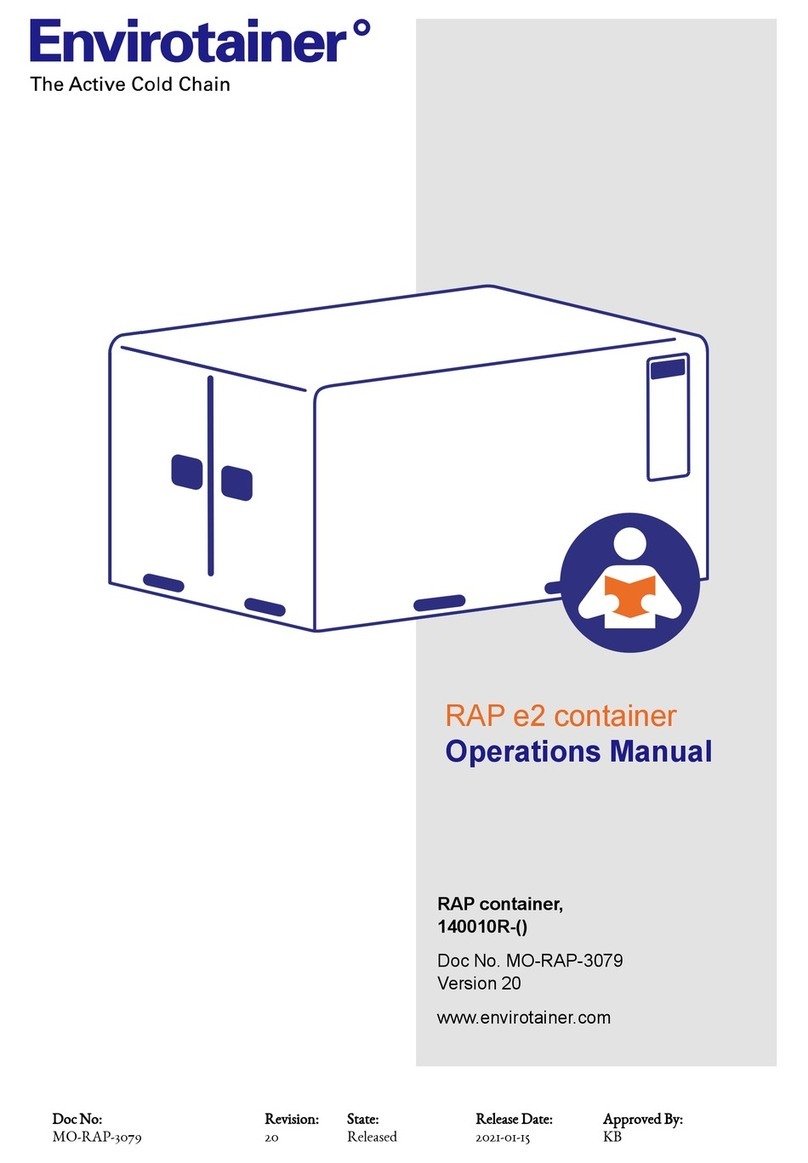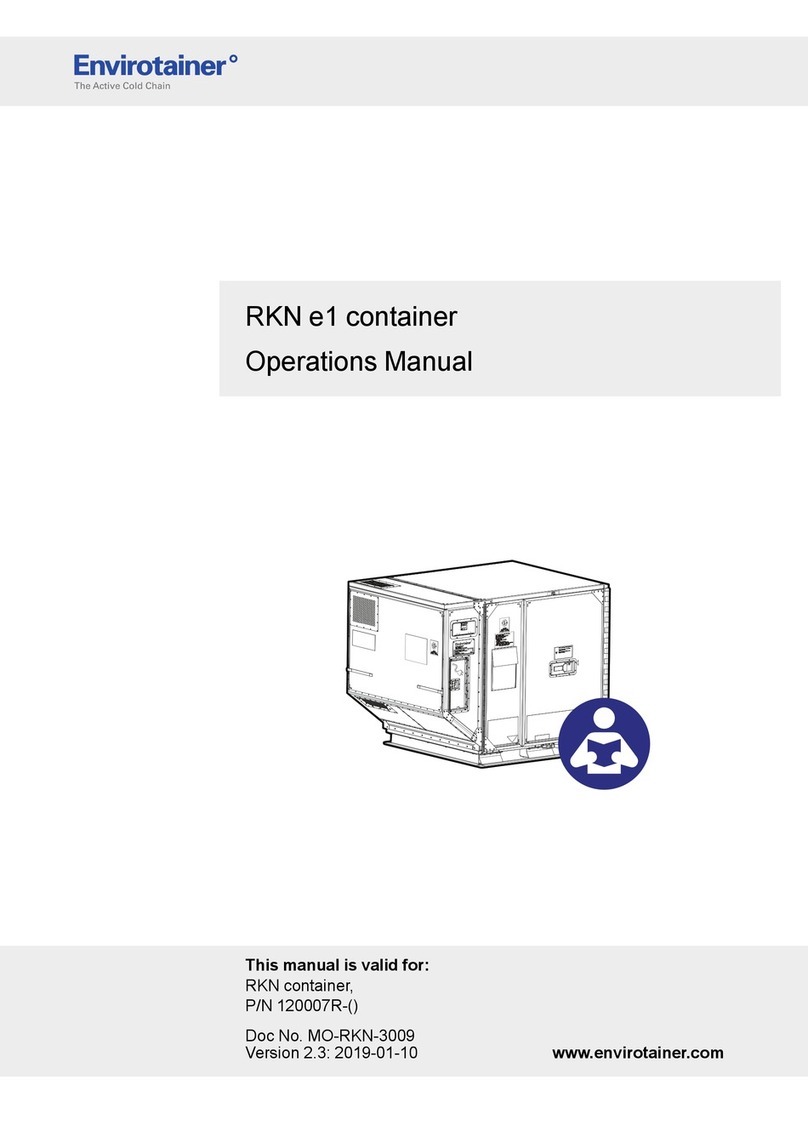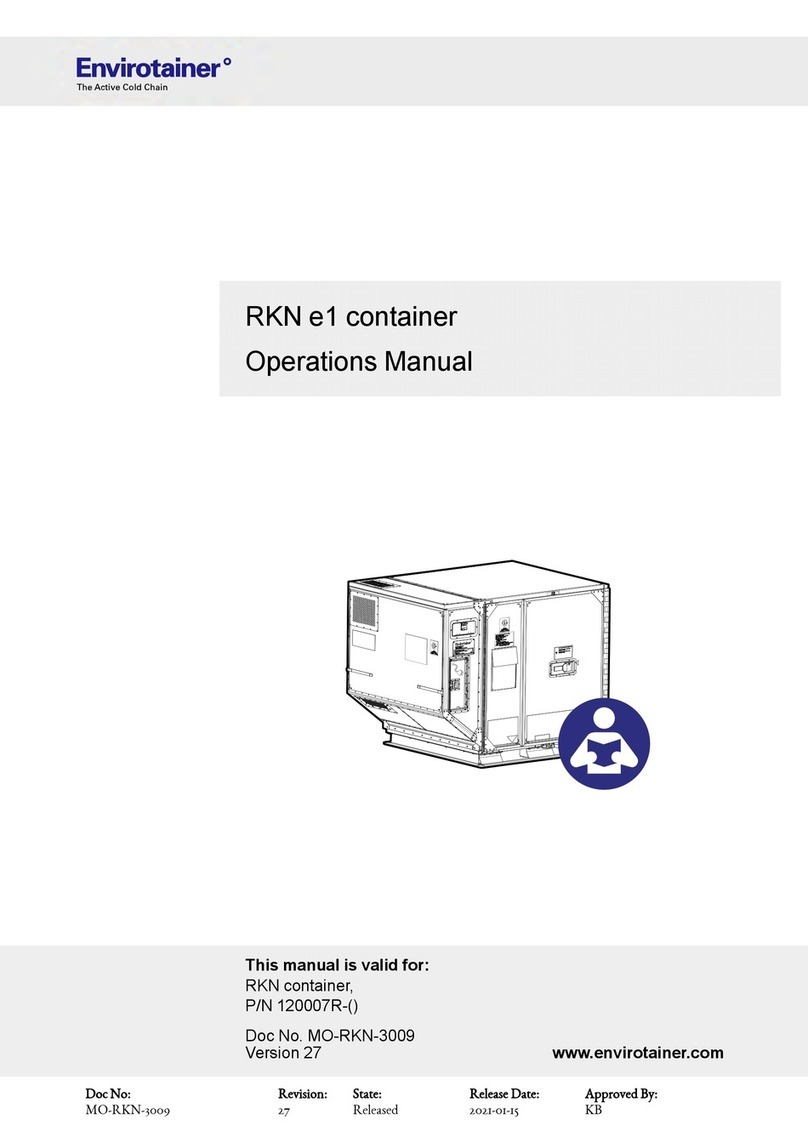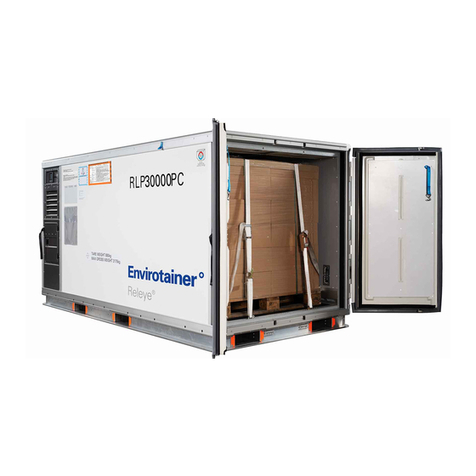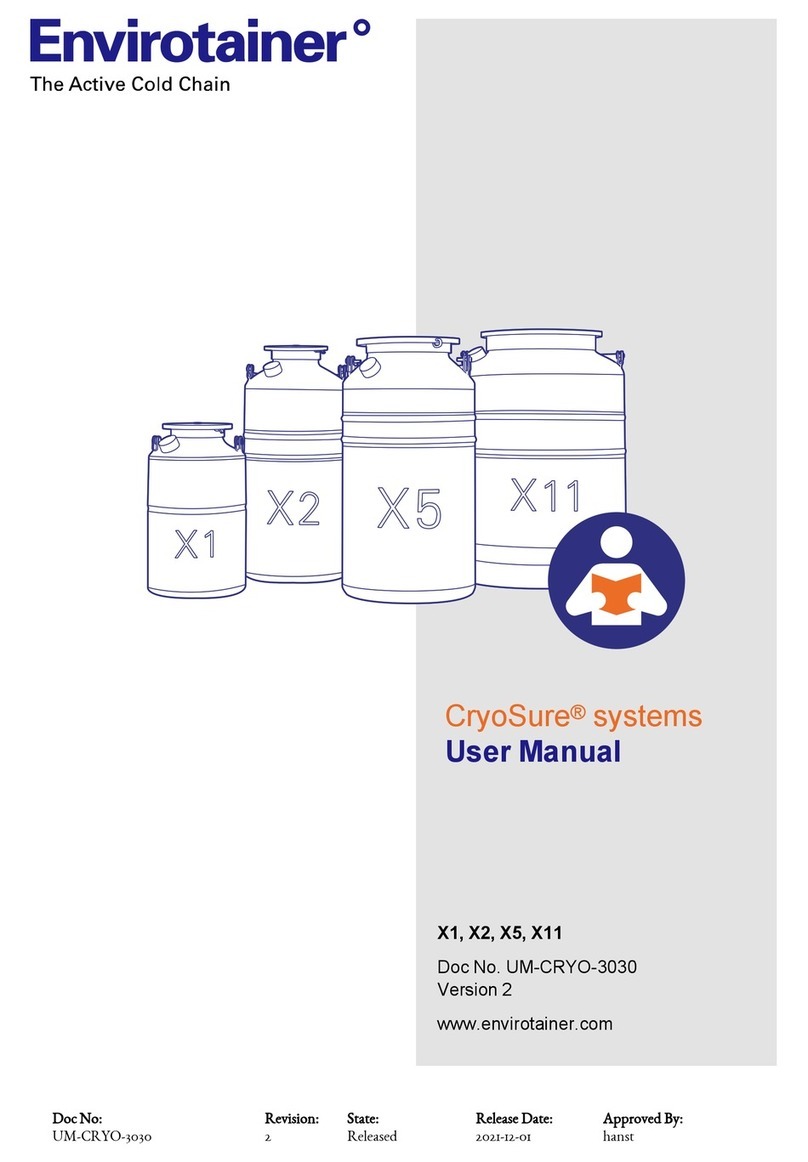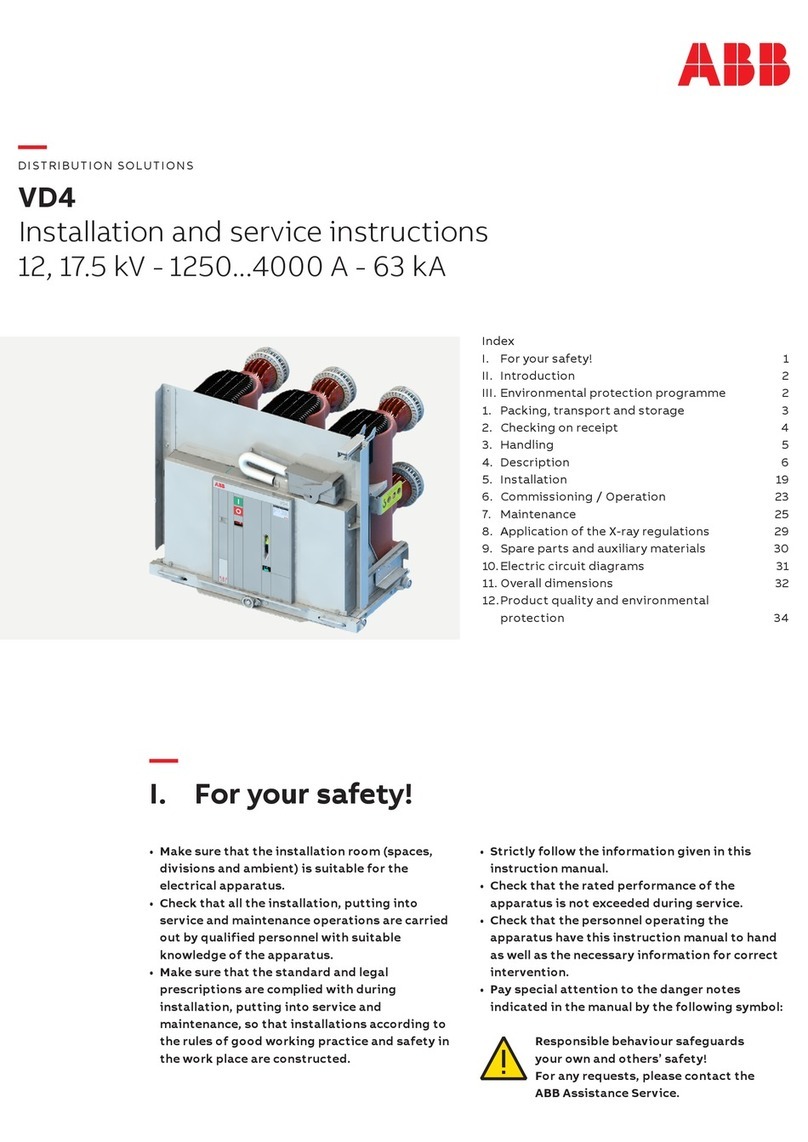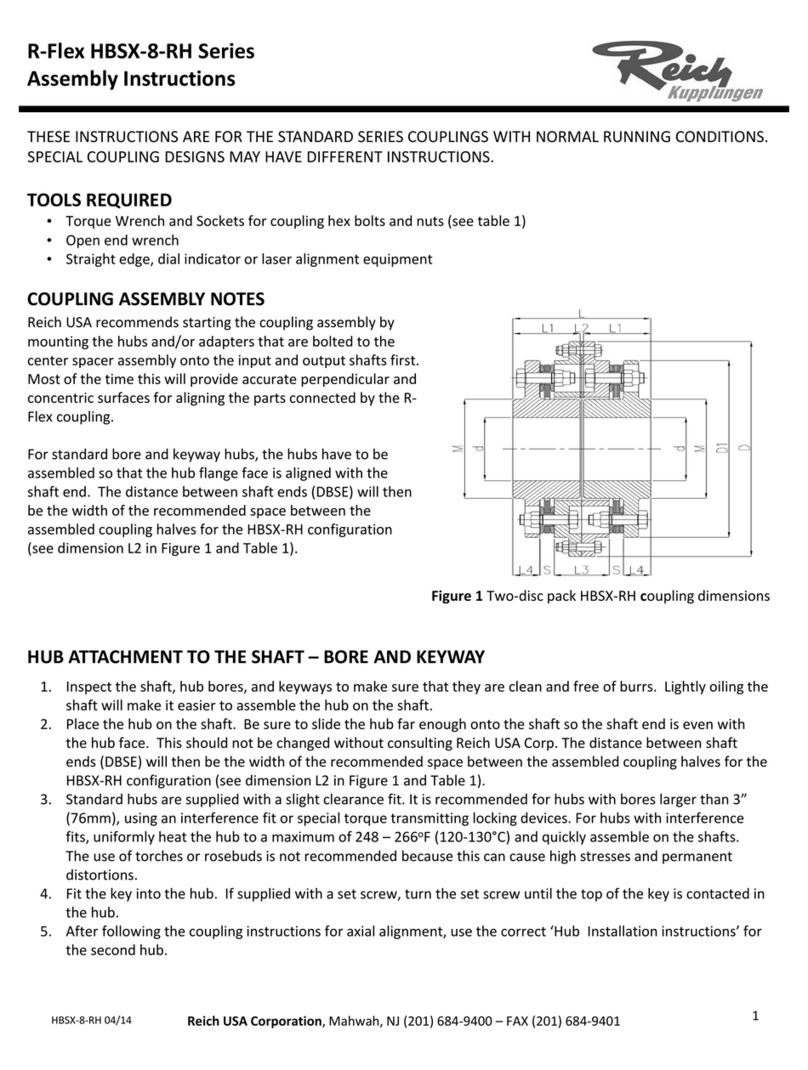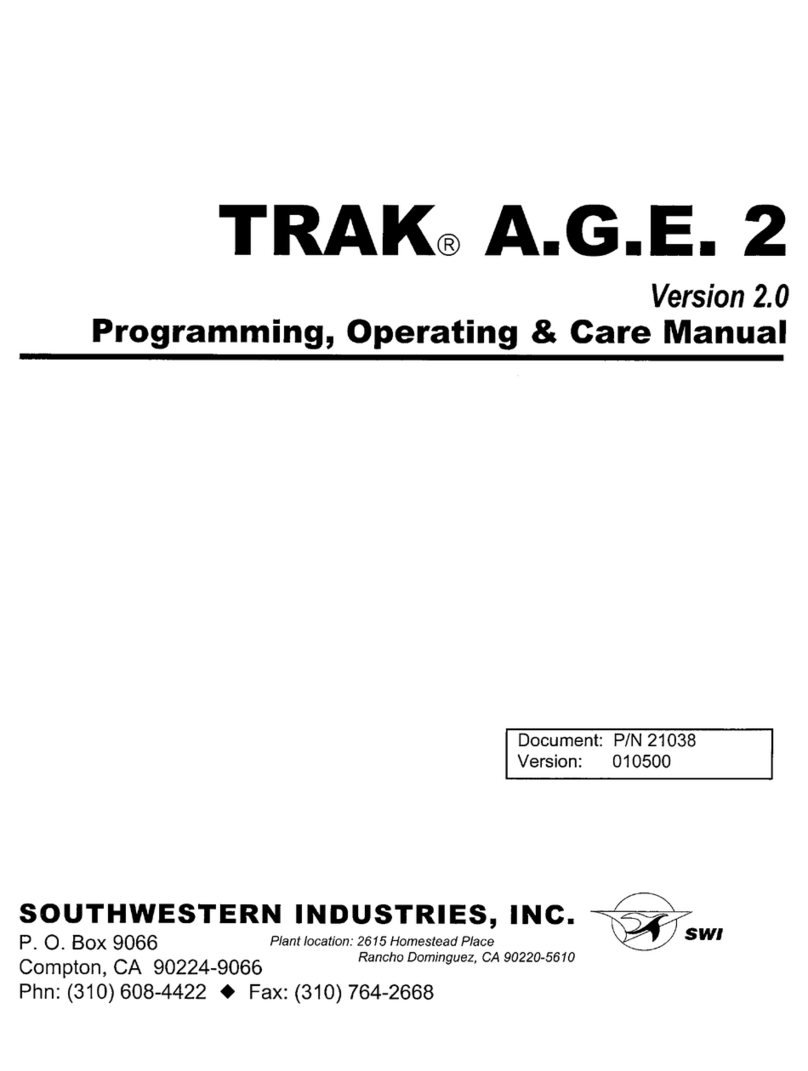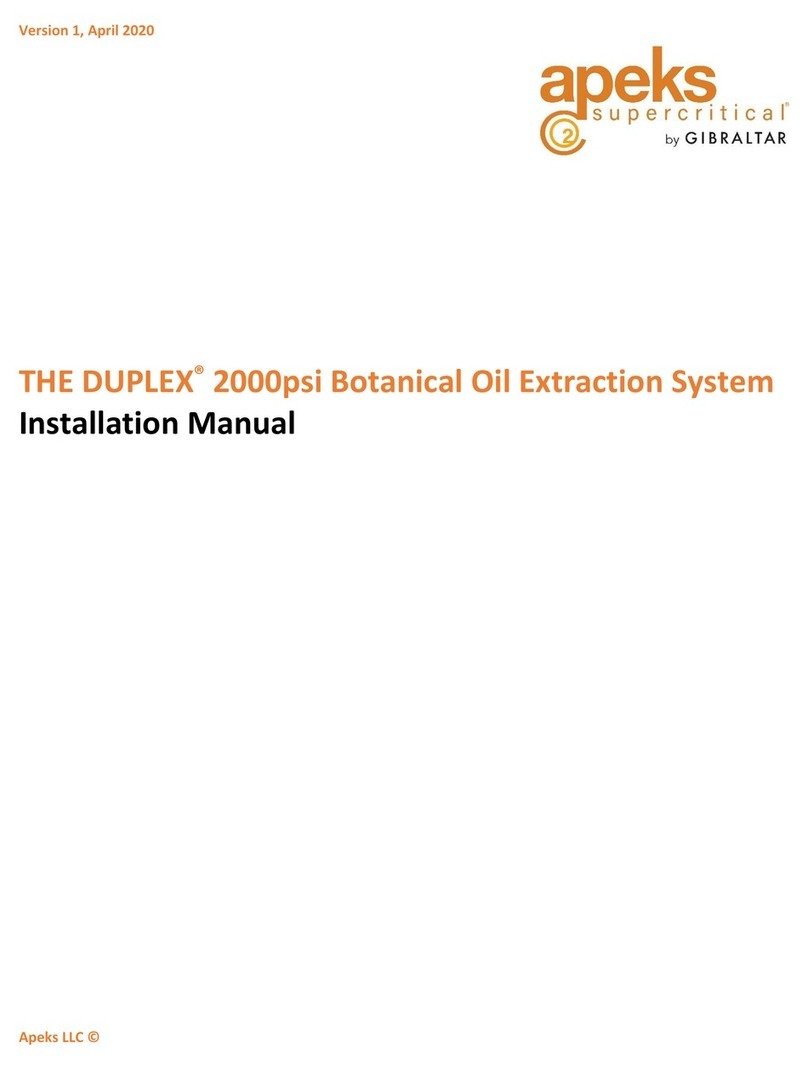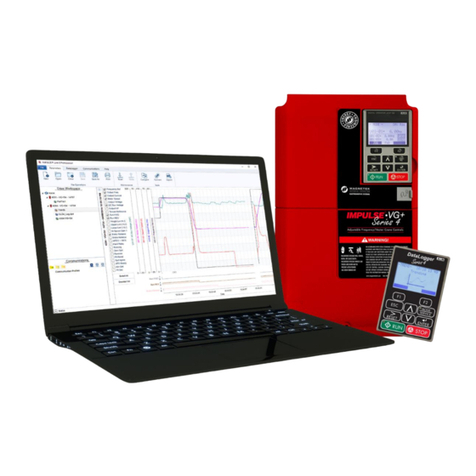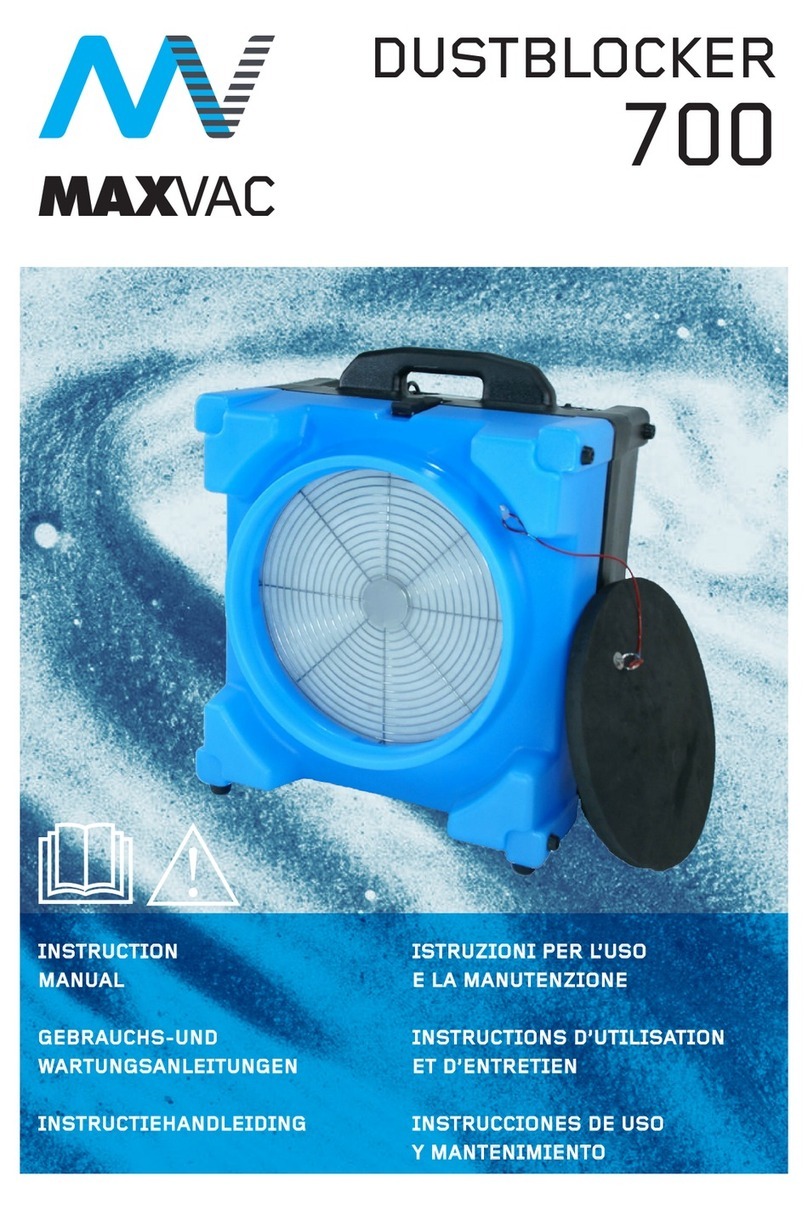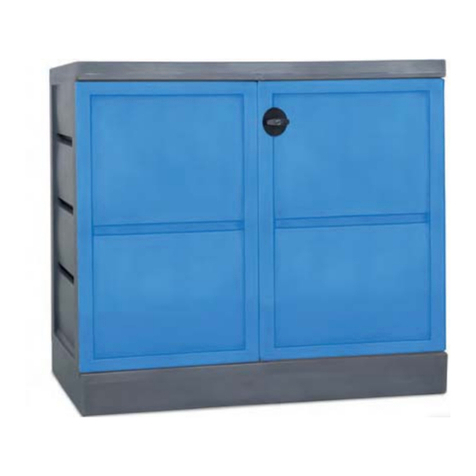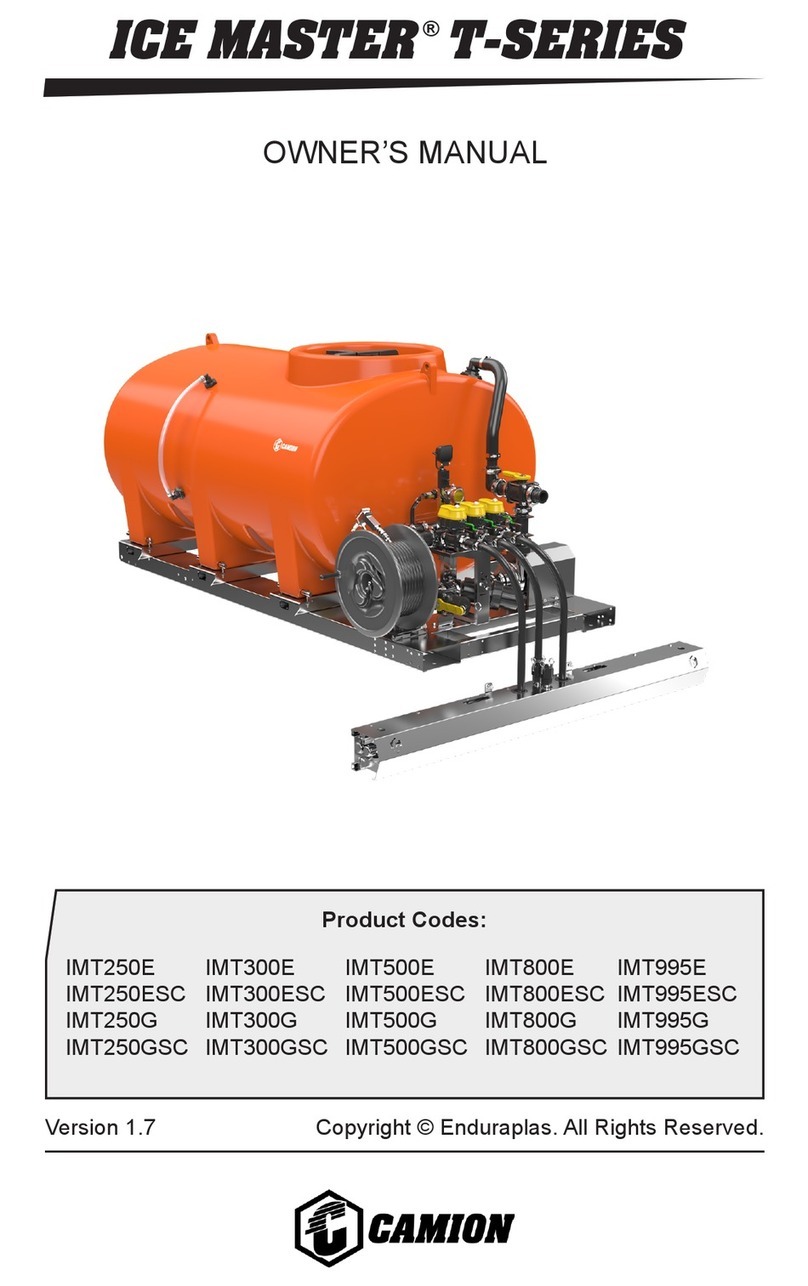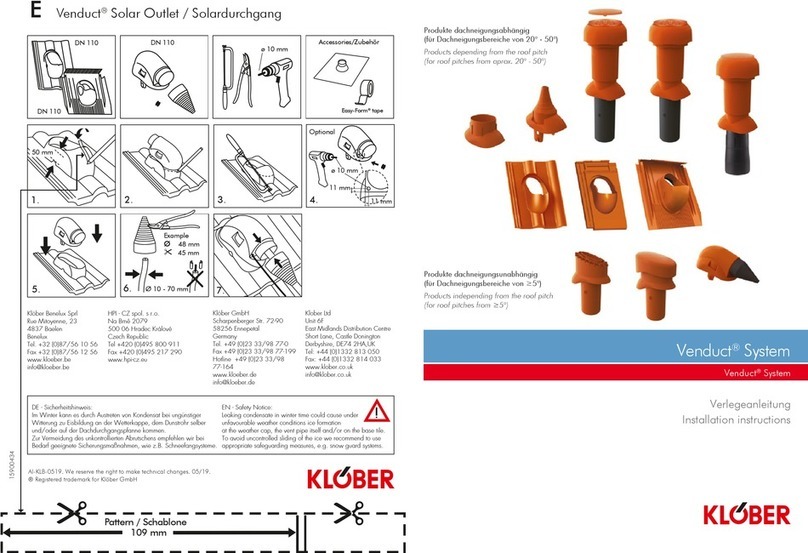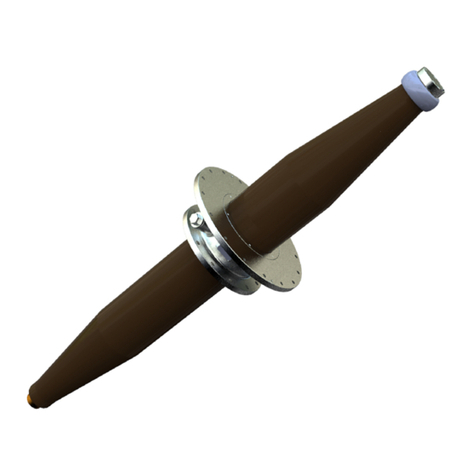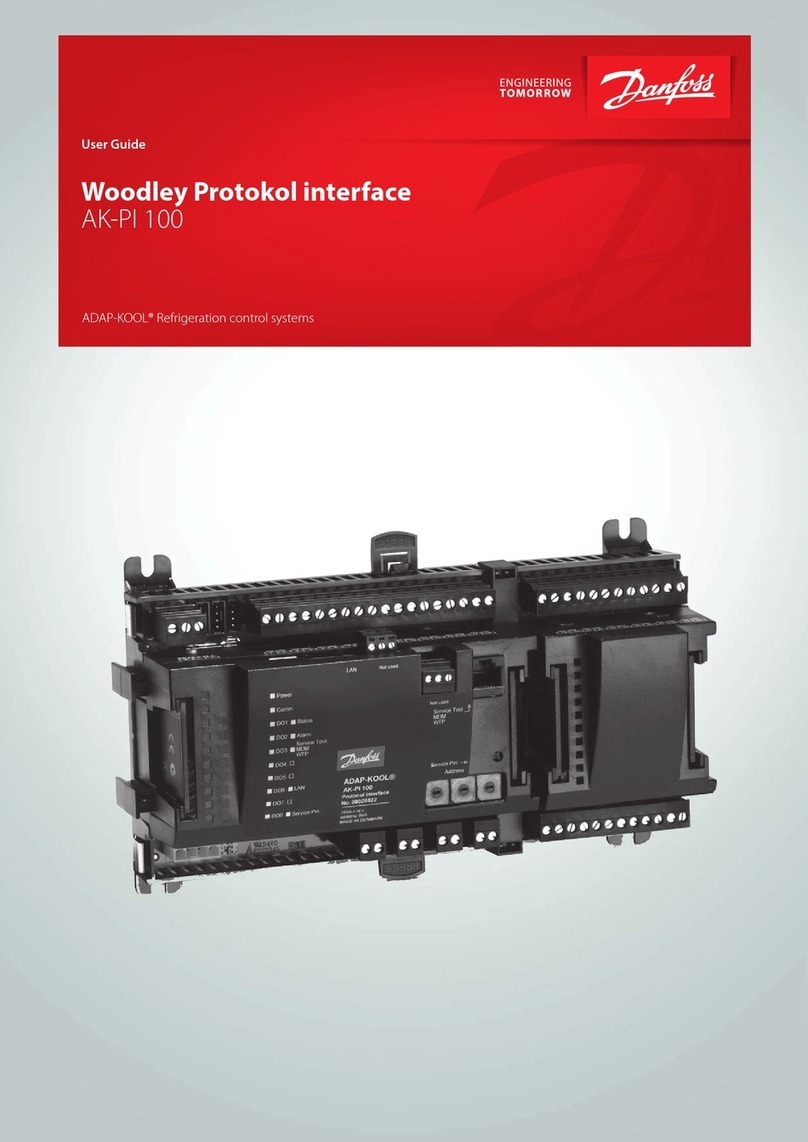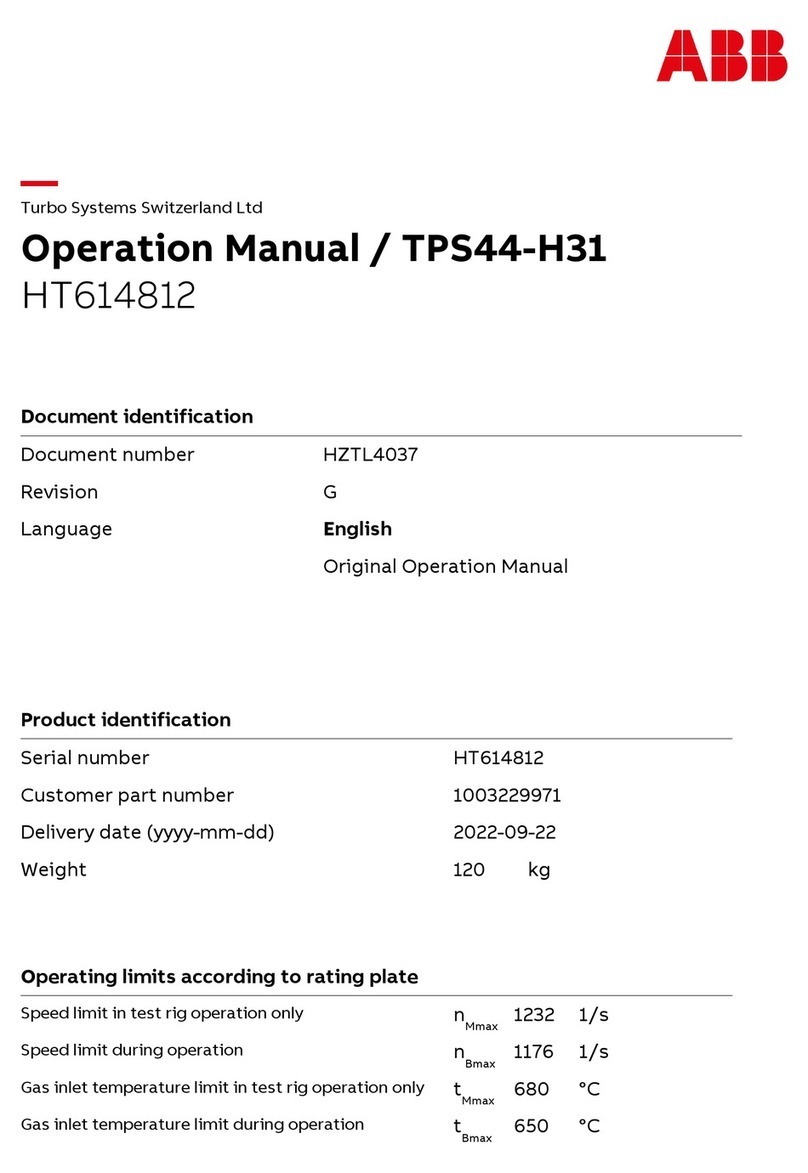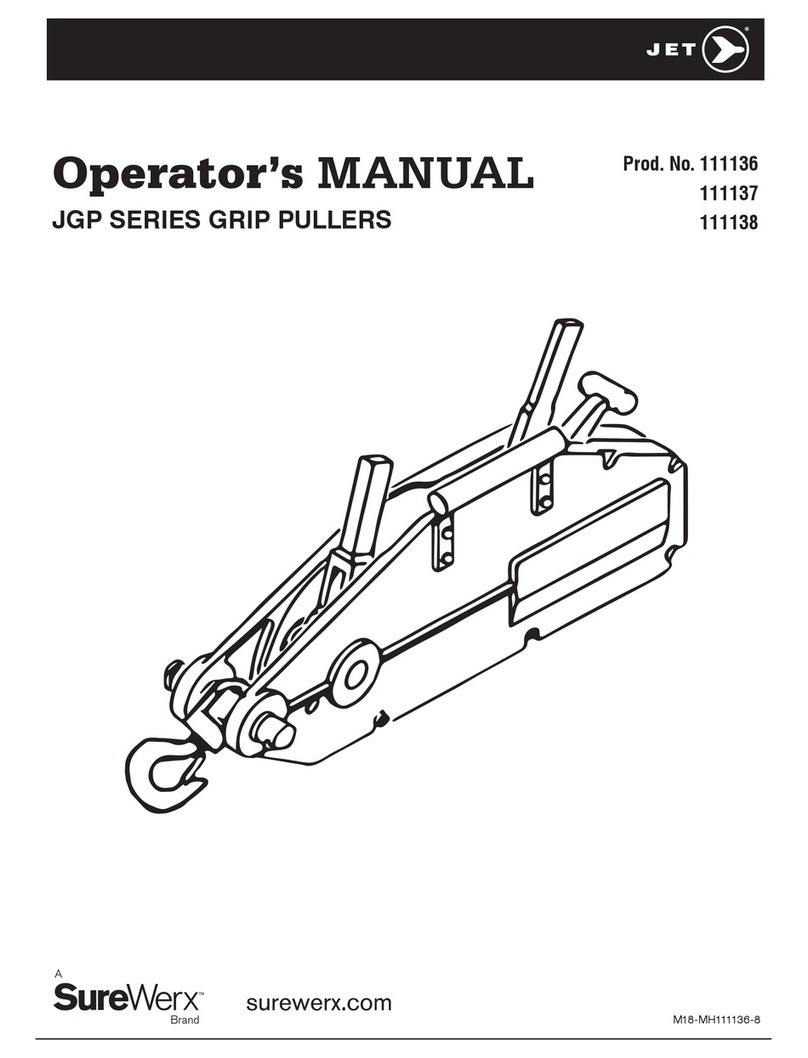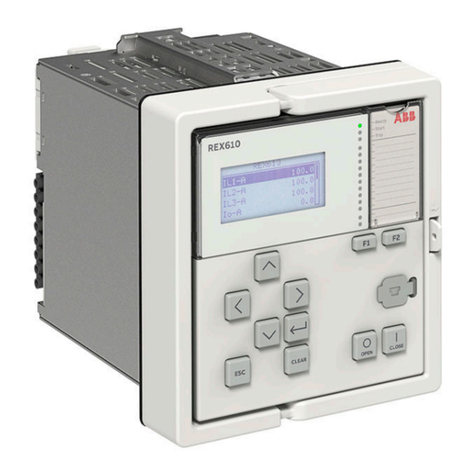
Doc. No. MO-RKN-3062
Version 1.5: Sep. 08, 2010 4 (38)
INTRODUCTION
INTRODUCTION
Scope of the Manual
This manual provides information for personnel involved in the handling and transport of Envirotainer
container series RKN t2 and is published by Envirotainer AB without warranty.
If there are questions regarding this manual or the container, send an e-mail to
- Frankfurt Operations Center +49 69 69 76 79 0
- Dallas Operations Center +1 972 831 3800
- Sydney Operations Center +61 2 9669 2245
Safety Instructions
The design minimizes hazards to personnel and equipment during use. No material used in the
construction constitutes a risk to the health of the personnel involved. All structural and
mechanical components are free of sharp edges. Every attempt has been made to anticipate
potential dangers and build in protections to prevent injury to personnel.
Normal precautions should be observed when handling locks, doors and lids. Wherever
necessary, warning stickers or texts will be attached to the container as a warning to users and
ground handler personnel.
Always follow the "IATA Dangerous Goods Regulations" when loading the container. For example,
due to low battery level, malfunction, etc., the container may not maintain the temperature in the
container cargo space. Special consideration should be given to this fact if dangerous goods such
as liquids with a low boiling point are to be transported.
The dry ice used as a refrigerant is considered a Class 9 dangerous cargo with the UN
identification number 1845 and is described as “Carbon Dioxide, Solid”.
Do not allow any exposed skin or body part to make physical contact with dry ice. Given the
extreme cold temperature of dry ice (-78.5°C / -109°F), severe frostbite can occur within seconds.
Personnel handling dry ice must use gloves or other insulating material.
Dry ice sublimates into large amounts of CO2gas. This colorless, odorless gas is heavier than air
and can accumulate and displace oxygen in low areas. Do not enter areas where CO2may have
accumulated without ventilating the space.
The Container
The RKN t2 container is a temperature controlled air cargo container used to transport
temperature sensitive cargo in the refrigerated, do not freeze (2-25°C / 36-77°F) and deep frozen
product temperature ranges. In general, the product temperature to be maintained must be less
than the ambient temperature.
The container consists of two primary parts; the cargo space and the dry ice bunker (refer to
Figure 1 on the following page). A temperature sensor located in the cargo space monitors the air
temperature, and when cooling is required, a fan is activated. Air from the cargo space is drawn
around the dry ice bunker where it is cooled before re-entering the cargo space.
Dry ice is contained in a separate bunker, which prevents carbon dioxide gas from entering the
cargo space and allows personnel to add dry ice to the container without disturbing the cargo
area.




















